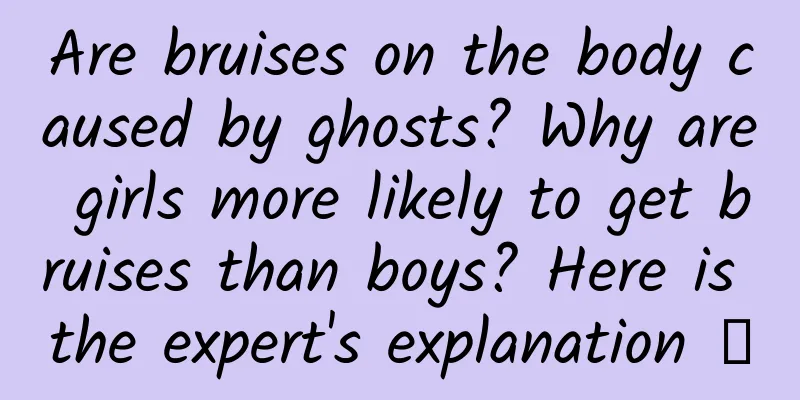Dandruff and hair loss, what's wrong with our scalp?

|
I don’t know if you who are busy every day have ever encountered such a situation. If you don’t wash your hair for a day, your scalp will be very itchy. Even if you simply comb your hair with your hands, dandruff will float down like snowflakes. Sometimes you can’t help but pick it with your hands, and as a result, large pieces of dandruff will fall off. Especially when washing your hair, you will lose a lot of hair. What is going on? Let’s talk about this issue today. 01. Scalp The scalp itself is the skin where hair attaches and grows. If there is a problem with this part of the skin, it will cause abnormal shedding of the scalp, and the hair follicles themselves will also be affected, causing hair loss. This has a lot to do with scalp health. Normal scalp cells are divided into different cell hierarchies, from the stratum corneum on the surface to the epidermis, dermis and subcutaneous tissue inside. These cells can maintain a relatively stable metabolism and renewal rate. Therefore, although everyone will have a certain amount of dandruff shedding, it can be replenished and maintained in time. However, if the scalp itself is not in good health, excessive death of scalp cells will occur, resulting in a large number of dandruff problems. According to the state of dandruff, it is divided into dry and oily conditions: dry dandruff is like snowflakes and is easy to shake off; oily dandruff is powdery and dotted, and is adhered to the scalp or hair by oil. At the same time, excessive proliferation of scalp keratin will lead to premature degeneration of hair follicles, a decrease in hair follicles, or even the disappearance of some areas, resulting in hair loss. Therefore, dandruff problems often cannot be ignored, as they may be one of the precursors to hair loss. 02. Why do scalp problems occur? Why do dandruff and hair loss occur? In fact, this is often due to scalp problems. This situation is related to both our physical health and the external factors we are exposed to. The former, such as factors such as diet, work and rest, etc., will affect our body's homeostasis and endocrine system, and these factors will be fed back to the cells of the scalp, resulting in the health of the scalp cells being affected. As for the latter, such as long-term exposure to sunlight, wind and rain, or even exposure to other air pollution problems, then at this time, the microorganisms of the scalp may not be able to withstand it. Not only that, it will further affect the health of the scalp itself. 03. Scalp Microbes When it comes to scalp microorganisms, many people may be unfamiliar with them. In fact, our scalp is a complete microbial ecosystem, called the "microbiome", which includes many microorganisms such as Staphylococcus, Corynebacterium, Micrococcus, etc. [1]. These microorganisms have adapted to the human body and formed a relatively stable ecology. The oil and sweat secreted by our scalp provide nutrition for the microorganisms, and these microorganisms secrete some ingredients to resist harmful microorganisms and maintain the scalp ecology. It can be said that this is a mutually beneficial behavior. These surface microbial ecosystems and the skin structure of the scalp together form our body's scalp barrier, which can not only maintain the scalp's own resistance to various environmental pressures, but also protect the scalp cells themselves. Only in this way can we maintain the best health. However, when these factors are destroyed, it will cause dandruff problems or even hair loss problems. For example, the most obvious problem is that there is a problem with the balance of scalp microorganisms. At this time, those potentially harmful microorganisms will take advantage of the situation and invade, further disrupting the ecological balance of the scalp and causing chaos in the scalp microbial flora, as shown in the figure below. The left side is the microbial community after the scalp ecology is destroyed, and the right side is the scalp microbial community of a normal person [2]. Very obvious differences can be seen, among which the microorganism Malassezia has a particularly significant impact. Many people may be unfamiliar with Malassezia (Pityrosporum), a fungus also known as Pityrosporum, which is widely distributed in nature. As our scalp is exposed to the natural world, it is naturally impossible to avoid Malassezia spores falling on it. In many cases, like other fungi, Malassezia exists in the form of spores. If the scalp barrier is damaged, Malassezia will multiply rapidly and secrete irritating squalene peroxide to irritate the scalp, causing scalp inflammation, which leads to an inflammatory reaction of the scalp and dandruff. This is one of the causes of dandruff. Continuous damage by Malassezia, coupled with damage to the health of scalp cells, will cause recurring dandruff and even hair loss problems. 04. How to restore the scalp ecology? Therefore, when faced with dandruff or even scalp loss, comprehensive repair is often required, and external intervention methods are used to restore the scalp microecology to a certain extent. So, how to restore the scalp ecology? In fact, probiotics are an option. As we mentioned earlier, the scalp microorganisms of normal people are an ecological balance. One of their important functions is to resist harmful microorganisms, so as to keep the scalp balanced. When this balance is destroyed, harmful microorganisms can take advantage of the situation and enter. Therefore, in the process of repairing the scalp, it is particularly important to restore the balance of scalp microorganisms. One of the strategies is to use probiotics. In fact, many times, people tend to think of probiotics as something like yogurt. In fact, probiotics itself is a very broad concept. In principle, all bacteria that are beneficial to human health are probiotics. As we mentioned at the beginning, removing Malassezia is only a superficial part. The real deep repair is to repair the scalp barrier and restore the stability of the scalp ecology. Therefore, if you experience itchy scalp and a lot of dandruff falling off, you must adjust your shampoo in time and try to choose ingredients that can repair the scalp microecology and scalp barrier. This can avoid further deterioration of the scalp and hair loss. Of course, if we want to achieve long-term improvement, we still need to adjust our lifestyle and diet to ultimately restore the overall scalp barrier. 1 Percival, Steven L., et al. "Microbiology of the skin and the role of biofilms in infection." International wound journal 9.1 (2012): 14-32. 2 Wang, Lili, et al. "Characterization of the major bacterial–fungal populations colonizing dandruff scalps in Shanghai, China, shows microbial disequilibrium." Experimental dermatology 24.5 (2015): 398-400. |
>>: Chimelong breeds the world's largest population of monkeys
Recommend
Collection of Xiaohongshu operation problems
01 Average click-through rate of notes Q1: Hello,...
Hexingshe Live Broadcast Account Training Camp - Brand new gameplay, Douyin live broadcast account algorithm logic, precise design of account creation hot products
Hexingshe Live Broadcast Account Training Camp - ...
Traffic screening for Tencent advertising promotion!
This time, the editor will continue to share with...
How to choose a company that specializes in Baidu Encyclopedia?
Nowadays, there are more and more companies that ...
What efforts have scientists made to prevent your poop from sticking to the toilet?
Produced by: Science Popularization China Author:...
Microsoft releases standalone Android emulator to simulate multiple popular models
[[142136]] Microsoft has released the official ve...
Gree Electric and Dong Mingzhu usher in new leadership
Fame brings gossip. As a hot-selling entrepreneur...
Reviewing the screen-sweeping advertising cases in October: Are you ready for the advertising creativity of Double 12?
When the much-anticipated Double Eleven carnival ...
What are the channels for online promotion of educational institutions?
The development of the Internet has a history of ...
Social media operation: 3 highly accurate "stealing fans" solutions
Although the traffic dividend of mobile Internet ...
Guixianbei University Sisters Xueba Parents Class for All Ages
Introduction to the resources of the all-age pare...
Practical operation of Douyin account in K12 education industry!
As the proportion of short videos in the content ...
How much does it cost to develop a Dalian food mini program? What is the quote for developing Dalian Food Mini Program?
The main factors affecting the price of mini prog...
The calla lily with a comet-like long tail turns out to be poisonous!
Produced by: Science Popularization China Author:...
There is a small hole on the bus seat? I saw it and realized that it has such a big effect
Relieve pressure. Bus seats are basically made of...









